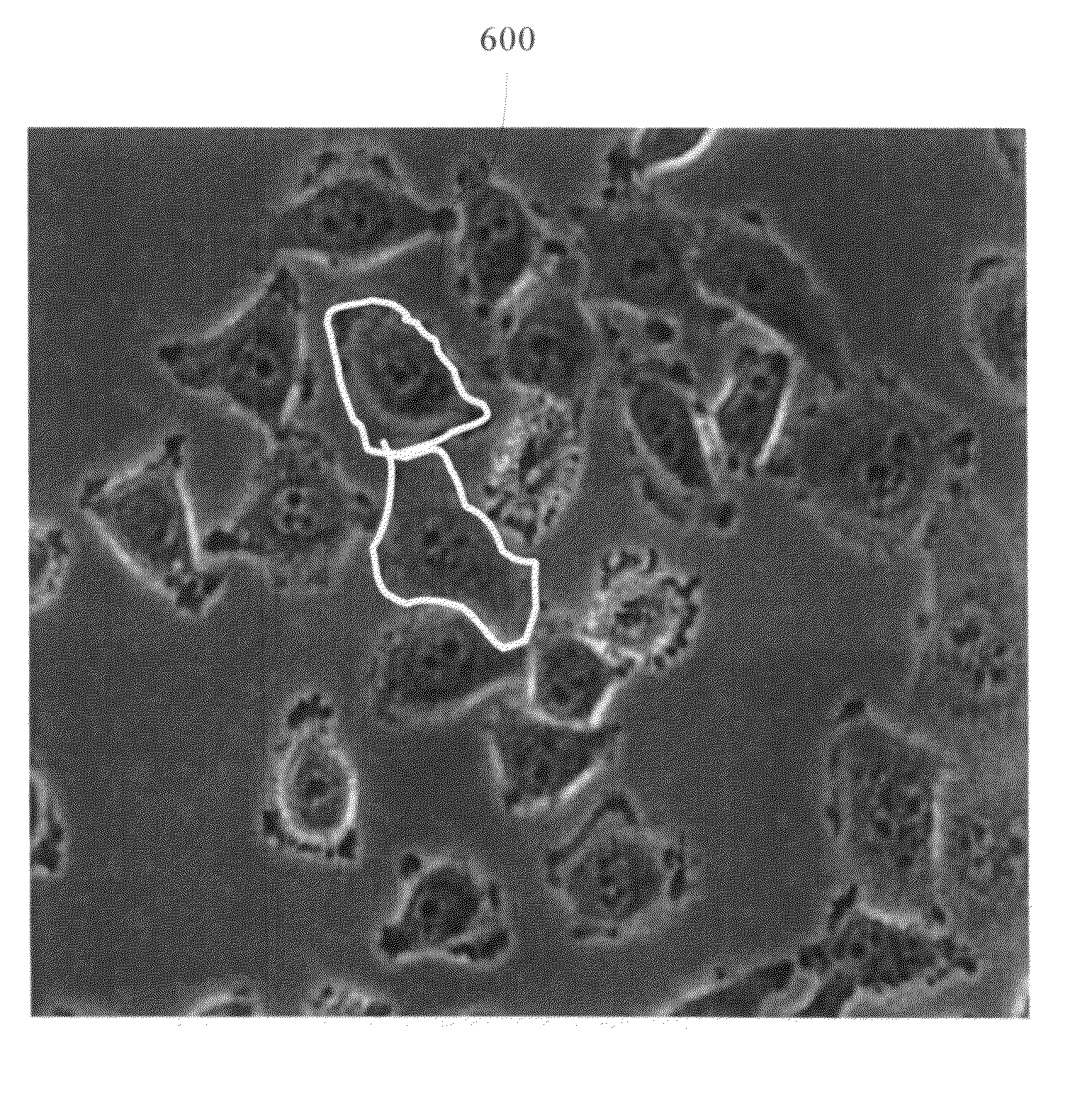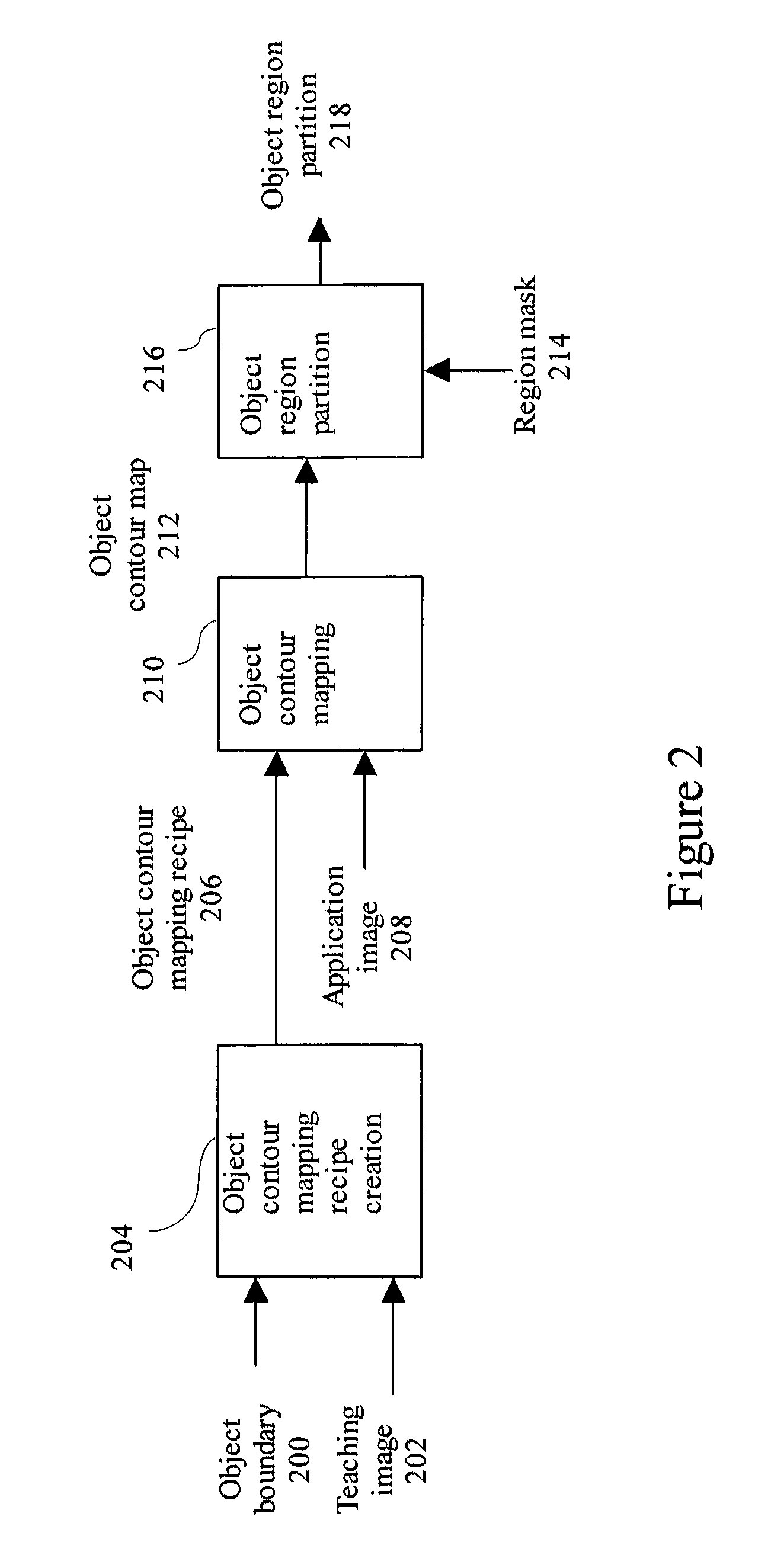Teachable object contour mapping for biology image region partition
a contour mapping and image technology, applied in the field of biology image recognition and the region partitioning step, can solve the problems of limited application, difficult to apply standard image processing software functions to perform biology image recognition, and plug-ins developed in one lab for image recognition rarely work for the application of a second lab, etc., to achieve accurate region partitioning, effective and efficient fitting, and easy tailoring
- Summary
- Abstract
- Description
- Claims
- Application Information
AI Technical Summary
Problems solved by technology
Method used
Image
Examples
Embodiment Construction
I. Application Scenarios
[0028]Biology image region segmentation identifies the regions in computer images where biological objects of interest occupy. Object partitioning in biological image recognition is the process of identifying individual objects in segmented regions. FIG. 1A shows a phase contrast biological image of cells 100 and FIG. 1B shows its biological object segmentation region 102, and 1C shows its region partitioning result 104. The current invention addresses the region partitioning process. Computer image region partition process inputs an image and the segmented objects of interest region and identifies the individual objects among the segmented regions for individual object counting and measurements. The region segmentation step could also create individual object regions from input image directly without the input of the objects of interest region mask.
[0029]The application scenario of the teachable region partition method is shown in FIG. 2. It consists of a te...
PUM
 Login to View More
Login to View More Abstract
Description
Claims
Application Information
 Login to View More
Login to View More - R&D
- Intellectual Property
- Life Sciences
- Materials
- Tech Scout
- Unparalleled Data Quality
- Higher Quality Content
- 60% Fewer Hallucinations
Browse by: Latest US Patents, China's latest patents, Technical Efficacy Thesaurus, Application Domain, Technology Topic, Popular Technical Reports.
© 2025 PatSnap. All rights reserved.Legal|Privacy policy|Modern Slavery Act Transparency Statement|Sitemap|About US| Contact US: help@patsnap.com



